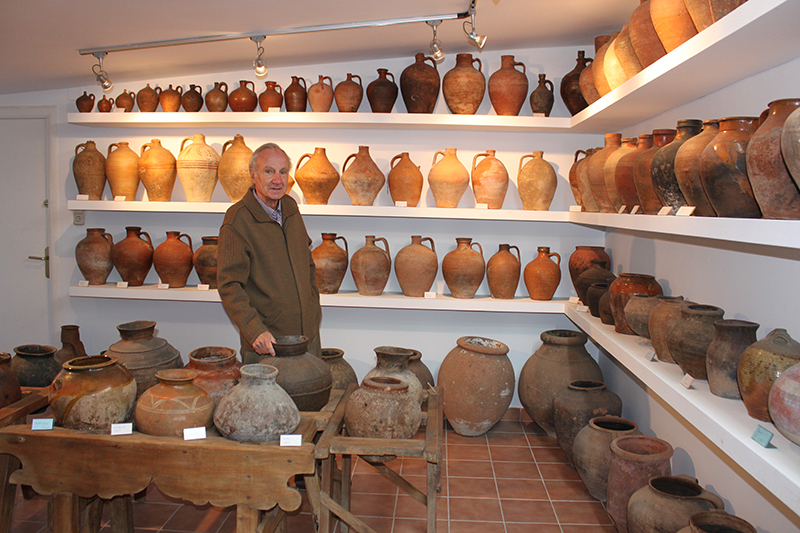This unique exhibition shows us how clay water vessels follow formal canons and scale sizes that allow them to satisfy a wide range of needs that these ceramic vessels have covered for centuries. Keeping track of these shapes and sizes is the main object of study of Joan Majó in his collection, very different from the one we usually find among clay collectors, in which the main value is usually gathering objects from the maximum number of producing centers earthen. Joan Majó, on the contrary, shows us how the same vessel offers us different formal variants (such as one or two handles), the shape and geometry of the body and, above all, the scaling of sizes. It is, therefore, a different vision of ceramics that will surely surprise and please the public who visits the exhibition.

This exhibition also wants to be a preview of what will be a future donation to the Museu del Càntir de Argentona of the entire collection of Joan Majó's water vessels, when the museum is in a position to receive it and make it available to the public. . At the moment, we present a very significant sample of the approximately 400 pieces that make up his complete collection. We must thank Joan Majó for his willingness to make the collection, which he has carefully made for so many years, go to a public institution so that everyone can enjoy it.
This unique exhibition shows us how clay water vessels follow formal canons and scale sizes that allow them to satisfy a wide range of needs that these ceramic vessels have covered for centuries. Keeping track of these shapes and sizes is the main object of study of Joan Majó in his collection, very different from the one we usually find among clay collectors, in which the main value is usually gathering objects from the maximum number of producing centers earthen. Joan Majó, on the contrary, shows us how the same vessel offers us different formal variants (such as one or two handles), the shape and geometry of the body and, above all, the scaling of sizes. It is, therefore, a different vision of ceramics that will surely surprise and please the public who visits the exhibition.
This exhibition also wants to be a preview of what will be a future donation to the Museu del Càntir de Argentona of the entire collection of Joan Majó's water vessels, when the museum is in a position to receive it and make it available to the public. . At the moment, we present a very significant sample of the approximately 400 pieces that make up his complete collection. We must thank Joan Majó for his willingness to make the collection, which he has carefully made for so many years, go to a public institution so that everyone can enjoy it.